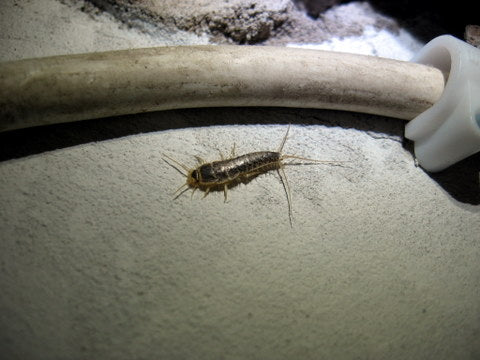
When it comes to pest control, knowledge is power. The more you know about ticks, the easier is it to know which steps to take in eliminating them. Different ticks pose different risks, and depending on where you live, the risk may be greater. Whether you are trying to eradicate an existing yard infestation or are simply looking for preventative measures to combat certain risk factors, getting to know as much as possible about these parasites will help you in your pursuit.
What are Ticks?
It may surprise you to know that ticks are scientifically classified as arachnids. They are members of the taxon, or subclass, of arachnids known as Acari, which they share alongside mites. Within this taxon is an order known as Parasitiformes, which holds an estimated 100,000 species of parasitic Acari. Parasites depend on a host animal in order to survive, taking their food supply from the host's body. This exchange is often at the expense of the host and can cause lasting damage and disease.
The habitat of ticks fall on the southeastern coast of the United States, ranging from southeastern Texas and Oklahoma to Virginia. They are most commonly found in long grasses or wooded areas but can also be found in urban areas and beaches as well. Common animal hosts include deer, rodents, squirrels, lizards, and birds as well as outdoor household pets.
Ticks prefer areas that are moist and shady, and generally avoid dry, sunny places. Contrary to popular belief, ticks do not live on their hosts, and only remain on the host to take in their blood meal, after which they will detach and find a shady area.
What Do Ticks Look Like?

Ticks range in size from three to five millimetres, depending on the species. They have rounded bodies and, depending on the species, the exterior body can be either hard or soft. Tick larvae have six legs, while adult and nymph (young) ticks have eight. Tick larvae are the size of a grain of sand, nymphs are the size of a sesame seed, and adult ticks average the size of a pencil eraser.
Ticks can be brown, reddish-brown, light gray, black, or yellow. Ticks do not have wings, and they will appear flat and oval unless they have eaten, after which they will appear rounded and enlarged.
What Damage Do Ticks Cause?
When a tick attaches itself to a host, the potential damage to the host is quite high. A number of diseases originate with these parasitic arachnids. Lyme Disease attacks the immune system and can affect the heart, joint, eyes, and liver.
Rocky Mountain Spotted Fever causes many flu-like symptoms with an onset of two days to two weeks, but the most common and noticeable characteristic is a spotted rash that appears on the wrists and ankles. Powassan is a rarer disease affecting only the Great Lakes areas. Symptoms of this disease can be neurological and severe, including confusion, headaches, seizures, and loss of coordination.
General paralysis can also occur in the first 24 hours after a tick bite. Other side effects include anemia and tissue damage, and in many cases an untreated tick bite could ultimately prove fatal.
Types of Ticks

The potential damage also depends on the type of tick. There are hard ticks and soft ticks, and each type of tick carries a different type of disease. Blacklegged or "Deer" ticks are the most common species of tick, but others include the Lone Star tick, Brown Dog Tick, American Dog Tick, and additional varieties of tick with their original Latin classification names such as Argasidae, Ixodes pacificus, and Amblyomma maculatum.
Ticks are identified according to their size, color, patterns along the abdomen (known as festoons), mouthpart shape and size, and dorsal adornment. Knowing the species of tick you are dealing with can be helpful in being aware of what may occur if you have been bitten. The Ixodes tick, for example, is the only tick which carries Lyme Disease.
What Causes Tick Infestations?
Outdoor tick infestations are nearly always caused by the movement of their hosts. A sudden population of ticks in your yard could be attributed to a surrounding presence of deer, squirrels, or birds in your area. Surrounding wooded areas or fields can be high in ticks, and animals who travel from these areas into your yard or neighborhood can be responsible for bringing a sudden surge in the tick population of your property. But don't worry, we have done our research and can help you eradicate or prevent these dangerous and unwanted pests.
How to Get Rid of Ticks

A tick who has attached itself to a host will remain there an average of 24 hours, burrowing its head deeper and deeper into the skin as it feeds. Because of this, removal of the tick becomes more difficult with time. If you find a tick on your body, check if you can still see the head of the tick.
A tick who has just attached itself to your body may be pried loose with fingers, but if it has been several hours you may need to break out the tweezers. Simply secure the back end of the tick's body between the tweezer pincers and pull away from your body. It is important to confirm that no part of the tick has broken off or remained inside the skin.
If the tick has burrowed deep into your skin and cannot be removed with tweezers, you will need to visit a doctor to have it removed---and as soon as possible. Hard ticks are virtually indestructible and many people dispose of the detached tick by burning it. Depending on the tick, you may need an immediate round of antibiotics.
If you have found a burrowed tick in your skin, you may want to visit a doctor and do some lab tests just to be safe. However, effective tick prevention begins outside--especially if you spend a lot of time in nature or have outdoor pets. You will need an effective insecticide to begin that prevention.
The Best Tick Control Products

To eliminate ticks from your yard and prevent close contact with members of your household, you will need to use effective products. The most effective products for eliminating ticks are insecticides, sprayed either on the perimeters of a home or building or inside, if the insecticide is safe to use indoors. You will need to confirm that the insecticide you purchase is appropriate for the area you intend to use it in. Factors such as local seasonal rainfall levels can also affect your decision.
For your apartment or home, NyGuard is a practical choice for pet owners as it targets fleas and lice and even neutralizes pet odors. A single, thorough application of NyGuard lasts up to seven months and will protect your home or business from ticks, fleas, mites, lice, cockroaches, and carpet beetles.
A waterproof insecticide is ideal for outdoor areas with frequent precipitation. This insecticide can also be used indoors. A waterproof spray would protect a shower or bathroom if it is connected to a vulnerable area or is nearer to the outside entrance of your home.
Delta Dust Insecticide is 100% waterproof, safe for both indoor and outdoor use, and lasts up to eight months. One pound will cover 1000 square feet, so this is a cost-effective solution as well.
ULD BP 100 Fogging Concentrate is a powerful indoor-outdoor solution for complete pest elimination as it targets the central nervous system of the pest and is effective on all manner of household pests like spiders, moths, fleas, crickets, flies, beetles, and ticks. Use this in conjunction with ultra low-volume fogging equipment in your kitchen, garage, townhome, or place of business.
Keeping Ticks Out of the Backyard

Once you have implemented effective insecticide coverage of your indoor and outdoor areas, there are additional steps you can take for complete elimination. Mowing your lawn regularly keeps grass short enough that it does not attract ticks. Keeping shrubbery and bushes trimmed eliminates those shadowy areas that ticks seek.
Fencing your lawn or creating natural barriers can also prevent certain larger wildlife such as deer from entering and bringing in ticks. Always remember to keep lawn debris at a minimum. If you keep chopped wood outside, do not store it in a shaded or closed area as this will cause the wood to retain moisture and shadow. Any shaded, moist area will attract ticks, so be aware of any secluded areas near your home such as the front or back porch. You or a family member or pet could easily carry in ticks from these common areas.
Another effective measure is to grow fragrant plants such as lavender, citronella, lemon balm, or marigold in your garden as the strong scent will act as a tick repellent. Most mosquito repellents will be equally effective on ticks, so be sure to keep citronella sprays or candles around the house. Mosquito repellent lanterns are also a great idea for outdoor summer night events such as cookouts or parties in the backyard.
If your children play outside, make sure they are wearing insect repellent, and if you plan on walking through long grass, use long, snug pants such as leggings with socks and shoes.
DIY Tick Control

Another method of tick control is to keep certain animals outside who specifically eat ticks. If your yard size and neighborhood rules permit, raising guinea fowl is an option. Guinea fowl eat ticks, fleas, and just about any other pest they find, so this is one method of going straight to source for tick elimination. However, those who have small yards or high expectations may not find this a good fit: guinea fowl roost in trees and do not keep to a coop. Those with a large yard or farm may find this solution ideal.
If you are looking for a more cost-effective DIY solution, one solid option is to make tick tubes. These tubes, which are easily made with toilet paper rolls and dryer lint sprayed with permethrin repellant , will create a place ideal for a tick to nest--thus drawing the tick away from your pets or home. The permethrin will then eliminate the tick once it has nestled inside. Be sure to keep these tick tubes out of reach of children or pets such as dogs.
Homemade insect repellent is another DIY solution-- and you my already have what you need around the house. Cedar or Eucalyptus Oil are effective repellents, as are Lavender, Tea Tree, and Neem Oil. Simply mix with a carrier oil and rub on the skin, or add alcohol or water to make a spray. Other scents that repel ticks are Rose Geranium, Lemon or Orange, Cinnamon, or Peppermint, so go ahead and make a spray out of whichever ones you prefer!
Interestingly enough, garlic consumption has been linked to a reduction in tick bites. Taking a garlic supplement can be an additional preventative measure, especially if you work outdoors or frequently hike on the weekends, or if you are dealing with a tick infestation in your yard.
The bottom line is that there are many different ways to educate yourself about ticks and tick prevention. Knowing your local tick species, what to do if you are bit, and how to effectively handle or prevent an infestation with both highly effective products and simple, DIY solutions are all important facets of maintaining a tick-free environment at home.
With all this in mind, we hope that you can go forward to tackle any and all tick-related issues in your life, and again, do not hesitate to seek medical attention if you have been bit by a tick.






Leave a comment (all fields required)